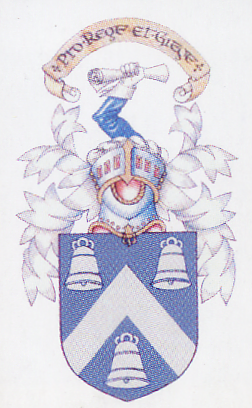
The Madras College Archive

|
|
The Madras College Archive |
|
|
Former Pupil Biographies Dr. John Hardie Wilson D.Sc., F.R.S.E. (1858 - 1920)
In 1886 he returned to St Andrews to study natural history. In 1887 Wilson, still an undergraduate, began to teach as a Demonstrator in Botany. He graduated in Zoology in 1888. Wilson became the University's first D.Sc hood in 1889 for work on the mucilage glands in the plumbagineae. As part of his studies he is known to have spent time in Germany and Belgium. Wilson was also a prime mover behind the establishment of the University Botanic Garden (primarily a teaching garden) that opened in the summer of 1889, and was responsible for supplying and planting out the garden assisted by Thomas Berwick. In 1890 Wilson left his teaching post for unclear reasons, at least partly
due perhaps to a reluctance on the part of the University to commit to
adequate funding of his teaching, which would change in 1891. During 1891
he laid out a teaching Botanic Garden at the Morgan Academy in Dundee with
the assistance of Patrick Geddes. In 1894 Wilson is recorded as 'of
Edinburgh University' and as Fellow of the Royal Society of Edinburgh,
having been elected to the latter in 1891. From 1894 he was teaching in St
Andrews again as extra-mural Lecturer in Agriculture. He was also
appointed, in 1894, Lecturer in Botany. He was also appointed, in 1894,
Lecturer in Botany at Yorkshire College, Leeds, afterwards Leeds
University, remaining in post until College restructuring saw funding for
his post end in 1897. In 1898, Wilson is known to be back in St
Andrews. In 1891 his paper "Observations on the Fertilisation and
Hybridisation on some species of Albuca" was published in the Royal
Belgian Botanical Society's Yearbook. His principle area of research was
disease-resistant food-crops, most especially potatoes, oats and soft
fruits, although he also had a lesser interest in developing new floral
varieties. The University was never enthused about his work or his field of study. He
received no salary from the University until 1908-09 when he was paid £40.
His income for those past 8 years was derived from fees (minus expenses)
charged for his numerous talks and presentations and educational sessions
given throughout Scotland and further afield. In some cases his rail and
hotel expenses were greater than the fees charged. In 1901 he was
instrumental in establishing the St Andrews and East Fife Farmers' Club.
He advised on methods of improving the greens of both the Old Course and
the Centenary Course at St Andrews.
Among his other interests Wilson was a keen antiquarian. He was also a skilled photographer, taking many striking and significant images not only of botanical specimens but also of St Andrews and the East Neuk of Fife. He received many honours, including the Royal Horticultural Society's Banksian Medal in 1899 for this work, and the Royal Caledonian Horticultural Society's Neill Prize in 1908 for his services to Horticulture. The Great War saw student numbers dwindle and, after 1916, funding for Wilson's experimental potato beds came to an end. He turned his attentions to tending to the University Botanic Garden for the duration of the War, the head gardener having been called up for active service. It was commented on at the time of his death (1920) that the strain of this work, which he undertook largely single-handedly in the absence of additional manpower during the War, had been contributory in his death. Wilson died in 1920 from pleurisy and pneumonia. |
||||